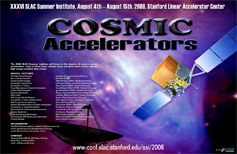

Monday - August 4, 2008
SLAC Today is
available online at:
http://today.slac.stanford.edu
In this issue:
The Brightest, Sharpest, Fastest X-Ray Holograms Yet
Malware Defense: Incomplete Without You
Mirror Finish
SSI Begins!
 |
 |
|
Monday - August 4, 2008 |
The Brightest, Sharpest, Fastest
|
||
|
|
||
Malware Defense: Incomplete Without You
So you received a notification that your anti-malware program found a security risk. The anti-malware program was able to quarantine or delete it—or maybe left it alone, said it was not accessible or didn’t know what to do ("undefined"). Next thing you know, your support person is interrupting your work to do a "full anti-malware scan" in something called "safe mode." This disruption can take anywhere from an hour to a few days, if security has to take your hard drive. What’s going on? Protecting SLAC information resources from malicious software (malware), including computer viruses, worms, Trojan horses, root kits, spyware, dishonest adware and more, is mission critical for the computer security group. Malware can be delivered to your computer during a variety of activities, such as opening email attachments and links, surfing the Web or installing unauthorized software. SLAC provides anti-malware software—currently for Windows platforms only—that catches most attempts to infect your computer. When it encounters something, it displays a notification to you and sends an alert to Computer Security to trigger additional actions as necessary. Read more... |
Mirror Finish
The Large Synoptic Survey Telescope team reports a big milestone: The primary and tertiary mirror casting, begun in March (see "LSST Gets Real"), has completed its critical cooling process and reached room temperature. The furnace lid was opened at 10 a.m. on July 23 and the mirror castings were inspected. They were perfect! Congratulations to the whole LSST team. SSI Begins!
The SLAC Summer Institute is here! Today through Friday August 15, SLAC will host SSI attendees from around the world to explore this year's theme of Cosmic Accelerators. Lectures, topical conferences and discussions will be held in Panofsky Auditorium between 9 a.m. and 6 p.m. Evening social events will be held in Panofsky Auditorium, the breezeway, and the cafeteria patio. |
Events (see all | submit)
Access (see all)
Announcements
|
| | ||
|
|
||
 <%
Response.AddHeader "Last-modified", getArticleDate()
'Response.AddHeader "Last-modified","Mon, 01 Sep 1997 01:03:33 GMT"
'Monday, December 06, 2010
%>
<%
Response.AddHeader "Last-modified", getArticleDate()
'Response.AddHeader "Last-modified","Mon, 01 Sep 1997 01:03:33 GMT"
'Monday, December 06, 2010
%>View online at http://today.slac.stanford.edu/. |
||